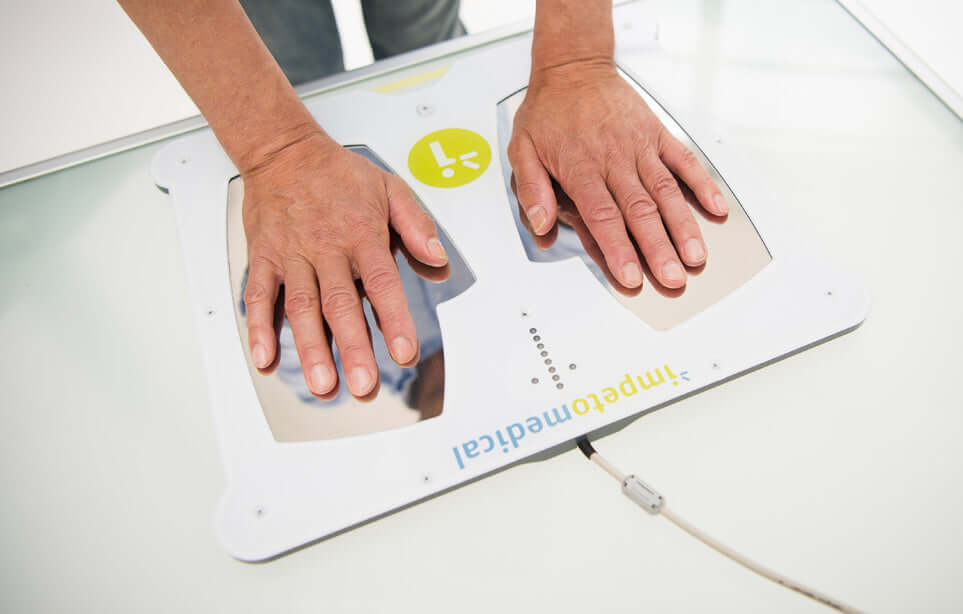
Comparing Sudoscan to other Diagnostic methods.
SUDOSCAN® vs. Competition

Punch (skin) biopsy – IENFD
What it is: A 3-mm skin punch biopsy used to quantify intraepidermal nerve fiber density (IENFD).
Evidence and Role: “Distal leg skin biopsy… is a reliable and efficient technique to assess the diagnosis of SFN.”
(Level A)Safety: “3-mm skin biopsy at the ankle is a safe procedure… [with] 0.19% incidence of non-serious side effects.”
Comparison: Highly specific and objective, but invasive and less practical for frequent monitoring.
SUDOSCAN, being non-invasive, is better suited for regular screening or follow-up.
QSART (Quantitative Sudomotor Axon Reflex Test)
What it is: Uses cholinergic iontophoresis to measure postganglionic sudomotor function.
Core physiology: “QSART measures the postganglionic sudomotor response.”
Limitations: “QSART is also time-consuming, requires special equipment and is not widely available.”
Comparison: QSART is physiologically precise but resource-intensive.
SUDOSCAN offers a faster, clinic-friendly sudomotor test.
SSR (Sympathetic Skin Response)
What it is: Measures evoked electrodermal potentials reflecting sympathetic cholinergic activation.
Sensitivity caveat: “Considering its low sensitivity, SSR should not be used as the only test to confirm sensory small fibre neuropathy.”
Comparison: SSR is easy to perform but less sensitive.
SUDOSCAN delivers an objective, quantitative, reproducible sudomotor measurement.
QST (Quantitative Sensory Testing)
What it is: Assesses thermal and mechanical detection thresholds through patient response.
Limitations: “Quantitative sensory tests are psychophysical in nature, requiring cooperation from the patient.” And: “QST is a psychophysical test and lacks the objectivity of NCS.”
Comparison: QST helps characterize sensory gain/loss but is subjective.
SUDOSCAN is objective, operator-independent, and less influenced by patient variability.
EMG (Electromyography)
What it is: Measures the electrical activity of muscles at rest and during contraction, typically via needle electrodes, to evaluate motor nerve and muscle health.
Clinical role: “Electromyography (EMG) is used to assess the health of muscles and the nerve cells that control them (motor neurons).”
Limitations for SFN: EMG primarily detects large fiber or motor involvement; “EMG and nerve conduction studies are often normal in patients with small fiber neuropathy.”
Comparison: EMG is valuable for ruling out other neuropathies and neuromuscular disorders but has low sensitivity for SFN.
SUDOSCAN directly evaluates small autonomic fibers, making it complementary rather than competitive.
- Biopsy (IENFD): Objective gold standard for SFN but invasive.
- QSART: Specific but “time-consuming” and limited in availability.
- SSR: Easy but “low sensitivity.”
- QST: Useful but “psychophysical… requiring cooperation.”
- EMG: Essential for large fiber/motor assessment but “often normal” in SFN.
- SUDOSCAN: “Quick and non-invasive… within 3 minutes,” making it an ideal screening and monitoring tool that complements or replaces other diagnostic methods.



